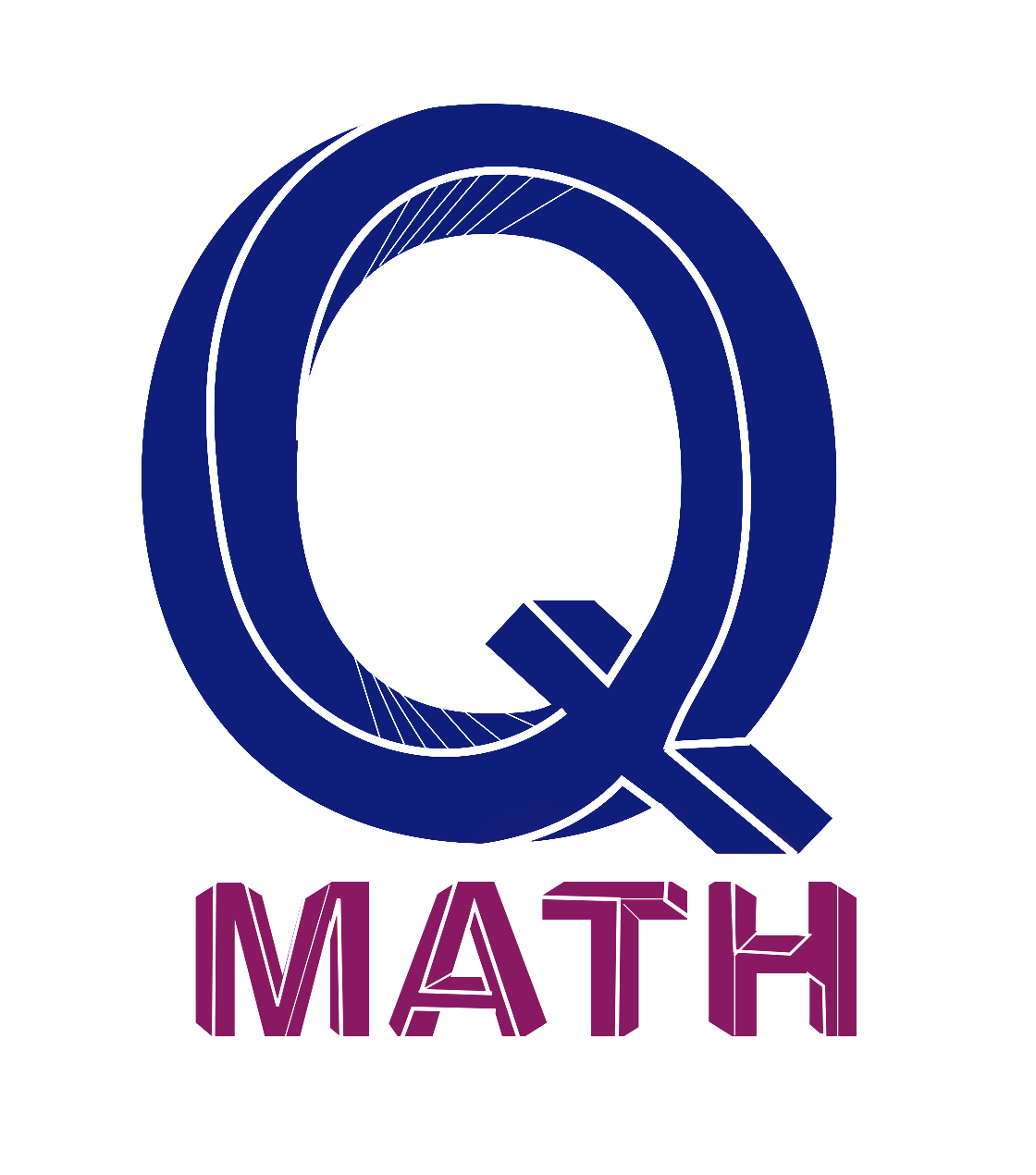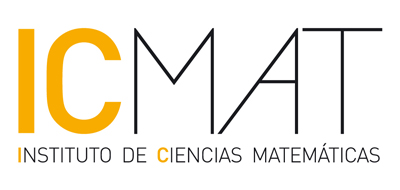Q-Math Seminar

Alberto Ibort (UC3M & ICMAT)
Higher order measures and decoherence functionals
Wednesday the 20th of June, 2018, 11:00, UC3M, seminar room 2.2D08
In 1994 R. Sorkin introduced the notion of grade 2 measure, or as they are commonly called now `quantum measure’, as a mathematical extension of the standard concept of measure that could account for the statistical interpretation of quantum mechanical systems. In this talk we will discuss the mathematical framework for the notion of quantum measures and their relation to the notion of decoherence functionals, a notion taken from R. Feynman’s histories interpretation of quantum mechanics but that, from a mathematical it provides a beautiful extension of the theory of Hilbert spaces with reproducing kernel.
Adrián Carrasco (UC3M)
On expander graphs
Monday the 4th of June, 2018, 11:00, UC3M, seminar room 2.2D08
For the past 50 years, expander graphs have become one of the most interesting and explored topics in discrete mathematics. In this seminar, I will explain the intricacies of these graphs, with a small introduction of basic concepts of graph theory in order to dive in the different issues that we have dealt with in order to find a specific constructions of these types of graphs. Despite the difficulty of the task at hand, we will see applications beyond mathematics that shows us the marvels of expander graphs.
Carlos Palazuelos (UCM & ICMAT)
Tensor norms and the state discrimination problem
Monday the 28th of May, 2018, 11:00, UC3M, seminar room 2.2D08
In this seminar I will start with a brief introduction to tensor norms. Then, I will explain why certain problems on tensor norms are important in the study of the state discrimination problem subjected to locality constraints. In particular, this will lead us to the study of the projective/injective ratio on the tensor product of general Banach spaces. I will then present our progress towards a full solution to this problem.
Antonio García (UC3M)
Semi-direct products of groups, filter banks and sampling
Monday the 7th of May, 2018, 11:00, UC3M, seminar room 2.2D08
An abstract sampling theory associated to a unitary representation of a countable discrete non abelian group G, which is a semi-direct product of groups, on a separable Hilbert space is studied. A suitable expression of the data samples and the use of a filter bank formalism allows to fix the mathematical problem to be solved: the search of appropriate dual frames for l^2(G). An example involving crystallographic groups illustrates the obtained results by using average or pointwise samples.
Julio Moro (UC3M)
Structure-preserving perturbation of eigenvalues of symplectic matrices
Monday the 16th of April, 2018, 11:00, UC3M, Seminar Room 2.2D08
Structured eigenvalue perturbation theory is motivated, among other considerations, by the error analysis of structure-preserving eigenvalue algorithms. Such methods have typically the advantage of computing eigenvalues which respect the natural symmetries, if any, induced by matrix structure, and are potentially more accurate than general-purpose spectral methods.
One matrix structure of great interest, espacially in Control Theory, for which several structure-preserving eigenvalue methods have been devised, is that of symplectic matrices. In this talk we analyze howUpcoming seminars do the eigenvalues of symplectic matrices change under small perturbations which preserve symplecticity. The strong symmetry constraints which symplecticity imposes on the spectrum, together with the restrictions on the number of odd-sized Jordan blocks, makes it very likely that eigenvalues of symplectic matrices behave very differently under structure-preserving perturbations than under arbitrary ones.
The analysis we present relies on two main ingredients: one is rephrasing in multiplicative terms the classic additive first-order eigenvalue perturbation theory. This incorporates into the analysis the basic multiplicativity underlying the set of symplectic matrices, viewed as a group with the operation of matrix multiplication. The second ingredient is the special relationships which symplecticity induces between left and right eigenvectors, which can made explicit by using structured symplectic canonical forms.
The material in this talk is contained in Fredy Sosa's forthcoming PhD thesis, and parts of it have been made in collaboration with Prof. Christian Mehl (TU Berlin).
María López-Fernández (Università di Roma La Sapienza)
Efficient high order algorithms for the fractional integral and associated FDEs
Thursday the 5th of April, 2018, 11:00, UC3M, Seminar Room 2.2D08
We propose an efficient algorithm for the approximation of fractional integrals by using Runge-Kutta based convolution quadrature. The algorithm is based on a novel integral representation of the convolution weights and a special quadrature for it. The resulting method is easy to implement, allows for high order, relies on rigorous error estimates and its performance in terms of memory and computational cost is among the best to date. Several numerical results illustrate the method and we describe how to apply the new algorithm to solve fractional diffusion equations. For a class of fractional diffusion equations we give the error analysis of the full space-time discretization obtained by coupling the FEM method in space with Runge-Kutta based convolution quadrature in time.
Joint work with Lehel Banjai (Heriot-Watt University, Edinburgh, UK)
Harsha K V (IIT Bombay)
Geometry of Statistical Model: An Information Geometric Approach
Monday the 12th of March, 2018, 11:00, UC3M, Seminar Room 2.2D08
A statistical model of probability distributions can be considered as a Riemannian manifold with a pair of dual affine connections which is known as a statistical manifold. In this talk, I will discuss some of the geometric structures on a statistical manifold. Further the invariance properties of these structures under a statistically significant mapping are also discussed.
Davide Barbieri (UAM)
Frames from unitary representations of non abelian groups
Monday the 19th of February, 2018, 11:00, UC3M, Seminar Room 2.2D08
The characterization of frames in Hilbert spaces that are invariant under a square-integrable unitary representation of an abelian group is a classical problem that has been solved in terms of bracket maps and fiberization mappings (or Zak transforms) by making use of the Fourier duality provided by the Pontryagin dual group. If the group is not abelian, an analogous approach requires the introduction of the group von Neumann algebra, that is the space of bounded convolution operator on L^2 of the group, and its noncommutative Lp spaces. The resulting characterization enlightens the role of modules over the Hilbert space as central objects describing the invariance and the well-posedness of the frame reproducing formula. We will provide a general view on this topic as well as some insight on the technical issues. We will also try to discuss some open problems and possible applications do data analysis.
Julio de Vicente (UC3M)
The distillability problem in quantum information theory II
Monday the 12th of February, 2018, 11:00, UC3M, Seminar Room 2.2D08
The distillability problem is one of the longest-standing open problems in the relatively young field of quantum information theory. Quantum networks for the implementation of quantum information protocols will require the ability to distribute entanglement so that ideally distant nodes can share maximally entangled states. However, in practice, the presence of noise will unavoidably degrade the quality of the shared entanglement. In order to cope with this effect, purification processes have been devised that allow to distill a maximally entangled state out of several copies of an entangled state of lesser quality. Nevertheless, it is known that there exist certain states whose entanglement is so weak that no maximally entangled state can be distilled from them even in the limit of infinitely many available copies. These states contain an useless form of entanglement in this scenario and are termed bound entangled states. The distillability problem asks for a characterization of such states. In this talk I will provide a gentle introduction to this problem and, if time permits, I will present some recent progress around it made in collaboration with E. Chitambar, M. Girard and G. Gour.
Julio de Vicente (UC3M)
The distillability problem in quantum information theory
Monday the 5th of February, 2018, 11:00, UC3M, Seminar Room 2.2D08
The distillability problem is one of the longest-standing open problems in the relatively young field of quantum information theory. Quantum networks for the implementation of quantum information protocols will require the ability to distribute entanglement so that ideally distant nodes can share maximally entangled states. However, in practice, the presence of noise will unavoidably degrade the quality of the shared entanglement. In order to cope with this effect, purification processes have been devised that allow to distill a maximally entangled state out of several copies of an entangled state of lesser quality. Nevertheless, it is known that there exist certain states whose entanglement is so weak that no maximally entangled state can be distilled from them even in the limit of infinitely many available copies. These states contain an useless form of entanglement in this scenario and are termed bound entangled states. The distillability problem asks for a characterization of such states. In this talk I will provide a gentle introduction to this problem and, if time permits, I will present some recent progress around it made in collaboration with E. Chitambar, M. Girard and G. Gour.
John Stewart Fabila Carrasco (UC3M)
Comparando grafos usando el espectro del Laplaciano magnético
Tuesday the 16th of January, 2018, 11:00, UC3M, Seminar Room 2.2D08
El Laplaciano (y su espectro) es uno de los objetos más importantes en Teoría de Grafos por sus diversas aplicaciones. Este operador depende del grafo y sus pesos (en vértices y aristas). Al aplicar un vector potencial en el grafo, obtenemos un operador más general: el Laplaciano magnético.
En esta charla usaremos los valores propios del Laplaciano magnético para poder comparar algunos grafos. Estudiaremos el comportamiento de su espectro bajo algunas operaciones elementales en el grafo (borrar aristas, haciendo cocientes, obteniendo menores del grafo, etc.).
Finalmente mencionaremos algunas posibles aplicaciones, por ejemplo: para estudiar el espectro de grafos periódicos infinitos usados en cristalografía, aplicaciones en Química, etc.
Juan Manuel Pérez-Pardo (UC3M)
Boundary conditions in Quantum Physics
Tuesday the 21st of November, 2017, 9:50, UC3M, Seminar Room 2.2D08
From a fundamental perspective and also from an applied one, boundary conditions play a determinant role in the description of Quantum Physics. I will expose several examples that illustrate this and will show the mathematical difficulties that arise with them.
Julio de Vicente (UC3M)
Can we infer the dimension of a quantum system using only measurement statistics?
Tuesday the 7th of November, 2017, 9:50, UC3M, Seminar Room 2.2D08
According to the axioms of quantum mechanics, every physical system is associated to a Hilbert space of a certain dimension. Is there any operational meaning attached to this? Can we infer the dimensionality of a quantum system based only on raw experimental data? Is there any difference between classical and quantum systems of the same dimension?
In this seminar I will review recent results by different authors aimed at answering these questions putting the stress on the underlying mathematics.
Alberto Ibort (UC3M & ICMAT)
Geometrical Structures for Classical and Quantum Probability Spaces
Tuesday the 24th of October, 2017, 9:50, UC3M, Seminar Room 2.2D08
On the affine space containing the space of quantum states of a finite-level systems there are various geometrical structures encoding relevant properties of them.
Guided by Dirac's analogy principle, we will discusss various contravariant tensor fields, Hamiltonian and gradient vector fields on the affine space containing the space of fair probability distributions on a finite sample space and analyse their geometrical properties.

